One day we decided to head West towards Portugal. There are three rural hotels in the same chain as Glenda’s favourite near Monfragüe. These need checking out. On the way we stopped off at the remains of a Roman village, Cáparra. This is a remarkably open and unprotected site which has been extensively excavated.
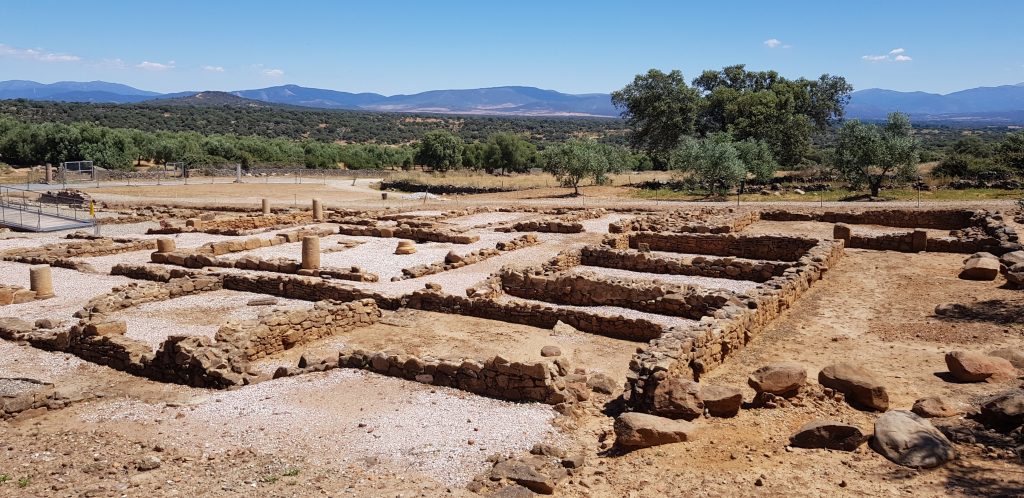
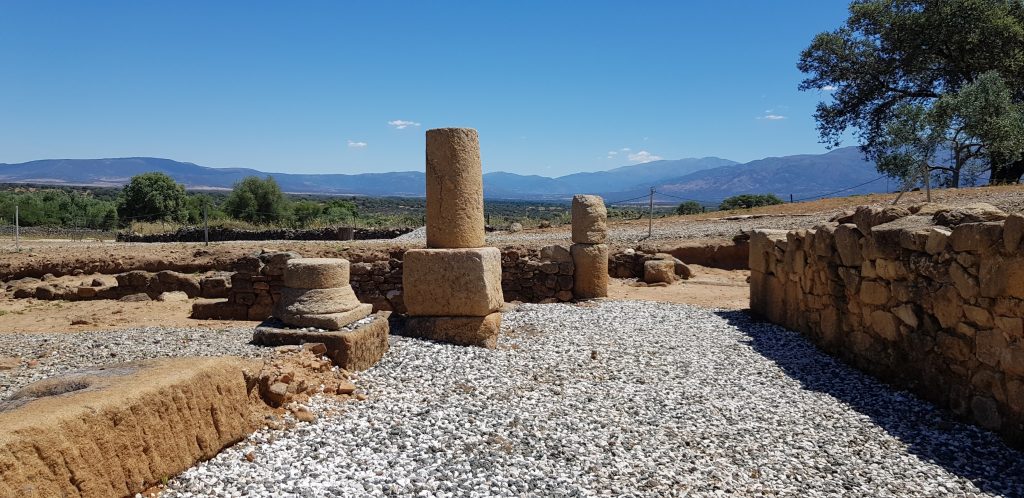
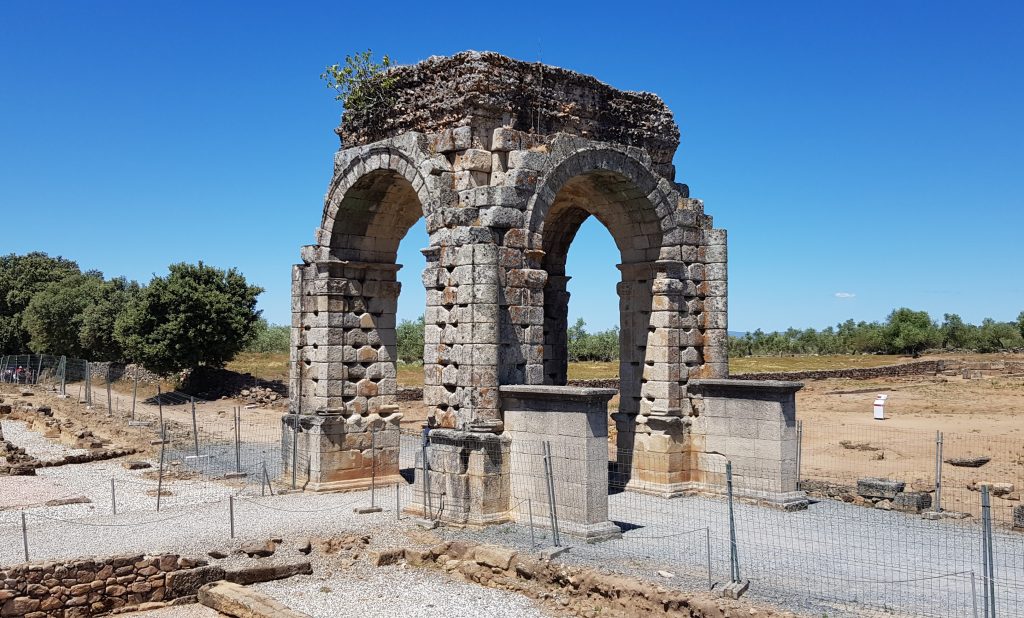
Apparently, the walled city covered an area of approximately 15-16 hectares although it is known that in the area northwest of the city there were many houses, so that the settled area is thought to have been much larger than the walled area.
At the rear of the site a pathway ran right under the four way arch and out into the country. So, of course, we followed it. It was another of these via pecuarias (drovers routes) and after a mile or so it was apparent we were walking the Camino Trail again! You may remember that we hiked a section of the trail last year in northern Spain (Well, OK, we ambled a kilometre or so of the trail through Castrojeriz where we camped on the way out of Spain!). This appears to be a different branch of the trail – so we’ve done this bit too. Again, only for a mile or two!

I’ve just checked. We were on the Via de la Plata which is is the longest Camino de Santiago route (about 1000 km long). It crosses the whole of Spain from Andalucia in the South to Galicia in the North. This Camino route was traditionally taken by North African Christians on their way to Santiago. The Romans left their mark along the Vía de la Plata which was also an important trading route. Indeed, some of the best preserved Roman sites in Europe such as those at Cáparra are found along the route. I suspect the Roman’s had a taxation thing going on!
Last year we were on the Camino Frances. OMG there are nine paths leading to the cathedral in Santiago de Compostela. We’ve still got seven more to walk (on)!
We found three more of the Hospideira chain and ate at one of them at Alcántara. Another convent re-purposed.
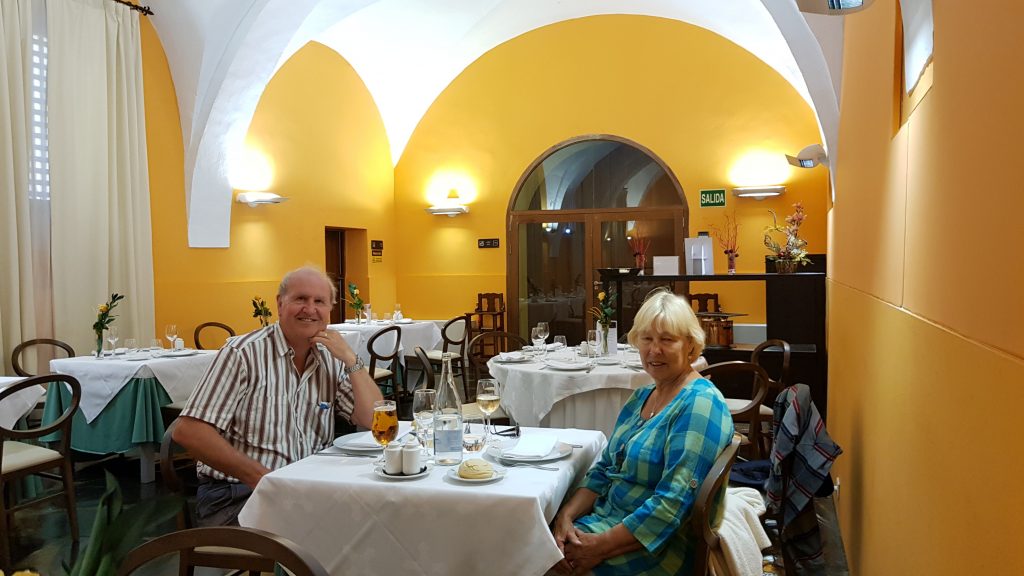
Afterwards – coffee on the terrace. A terrace with a view! …
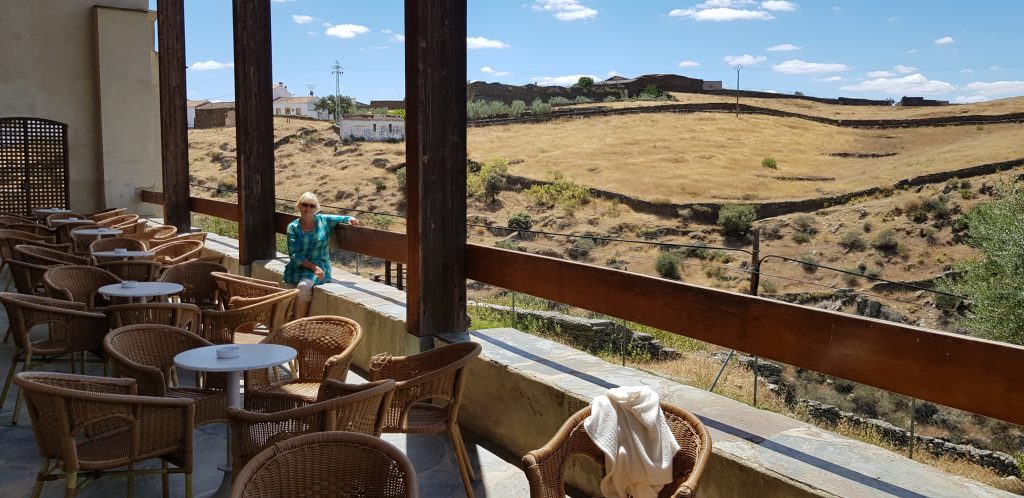
At the entrance to the village we found the compulsory fountain …
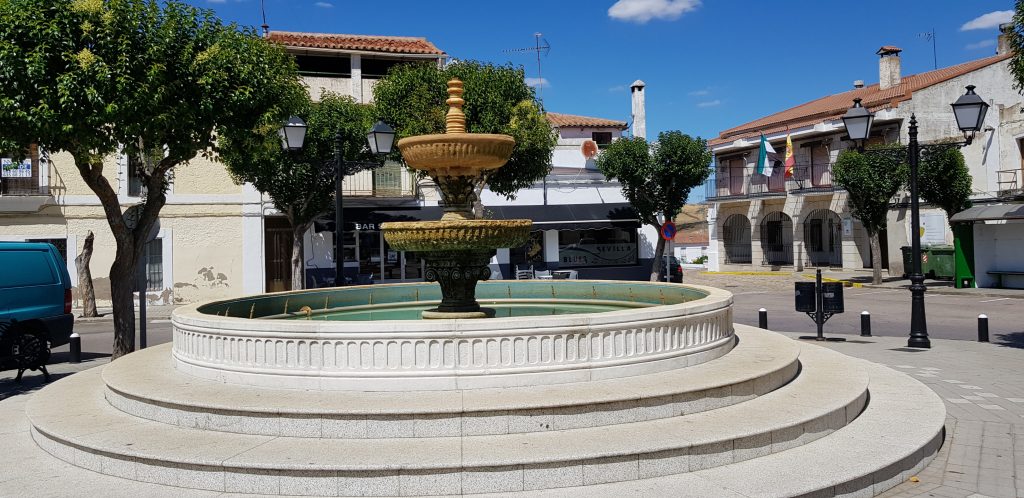
The walk through the village after was enhanced by a chance encounter with a local who had probably been drinking in the bar since 9 am. He was determined to extol the touristic delights of his town. We had a ten minute conversation – him in Spanish us in English. It was not the most informative discussion either way, I suspect. And the smirks on the faces of other patrons of the bar would suggest that they had seen this behaviour many times before.
Anyway, we eventually escaped just in time for the 5 o’clock tour of the Convent de San Benito. Six Spaniards and us.
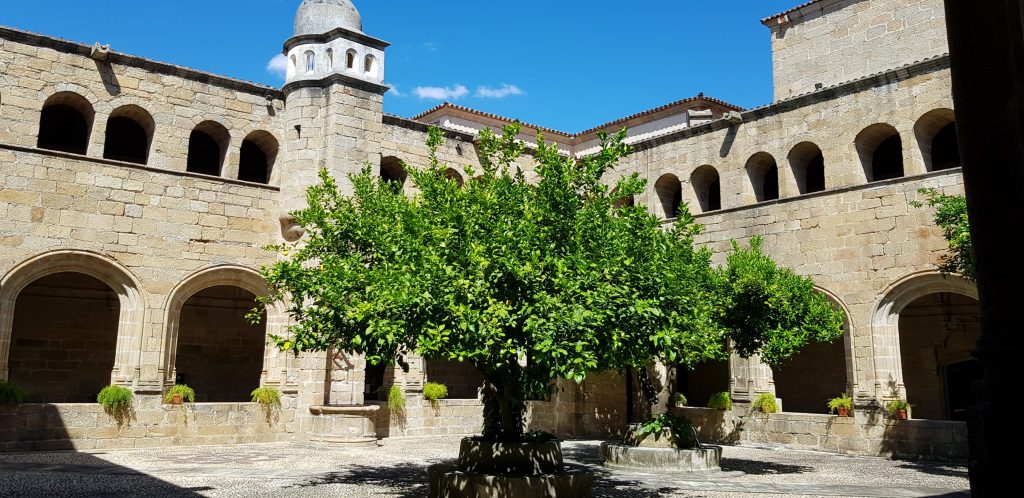
The history of the place is complex. It appears that it was the headquarters of one of the main four religious/military orders of the region. A bit like the Knights Templar. The remnants of these four sects are now still represented in the area in a peaceful mode. And this “convent” is home to their current activities. Their colours and insignia can be seen in the photo of models arranged around a flat screen TV showing the latest episode of Neighbours…
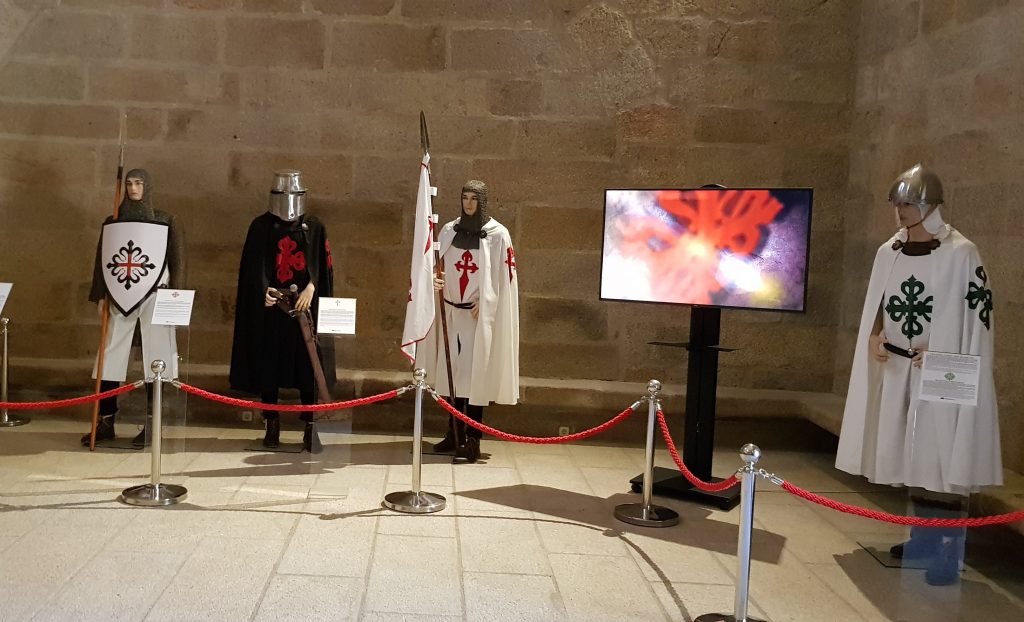
We may have to wait for a full and proper explanation of the real facts from Bruce-the-historian. Suffice it to say it was a peaceful haven in what was (apart from patrons of the cafe by the fountain) a totally peaceful town. Looking up the stone staircase made a good photo too..
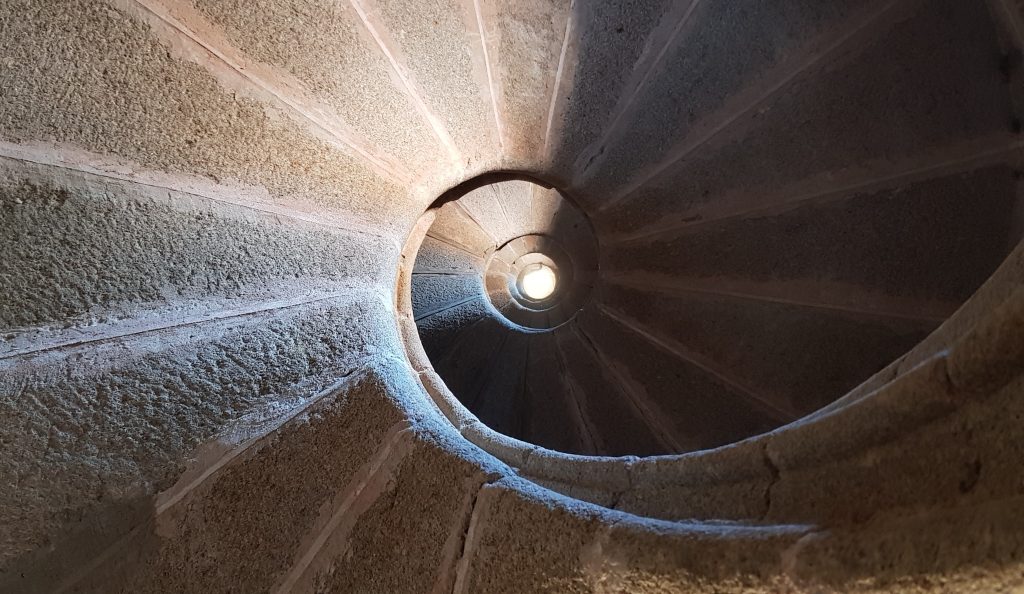
… and not only that but the hour long escorted tour was free. Bargain!
The rest of town was very interesting – but most impressive was the Roman bridge over the Tagus.
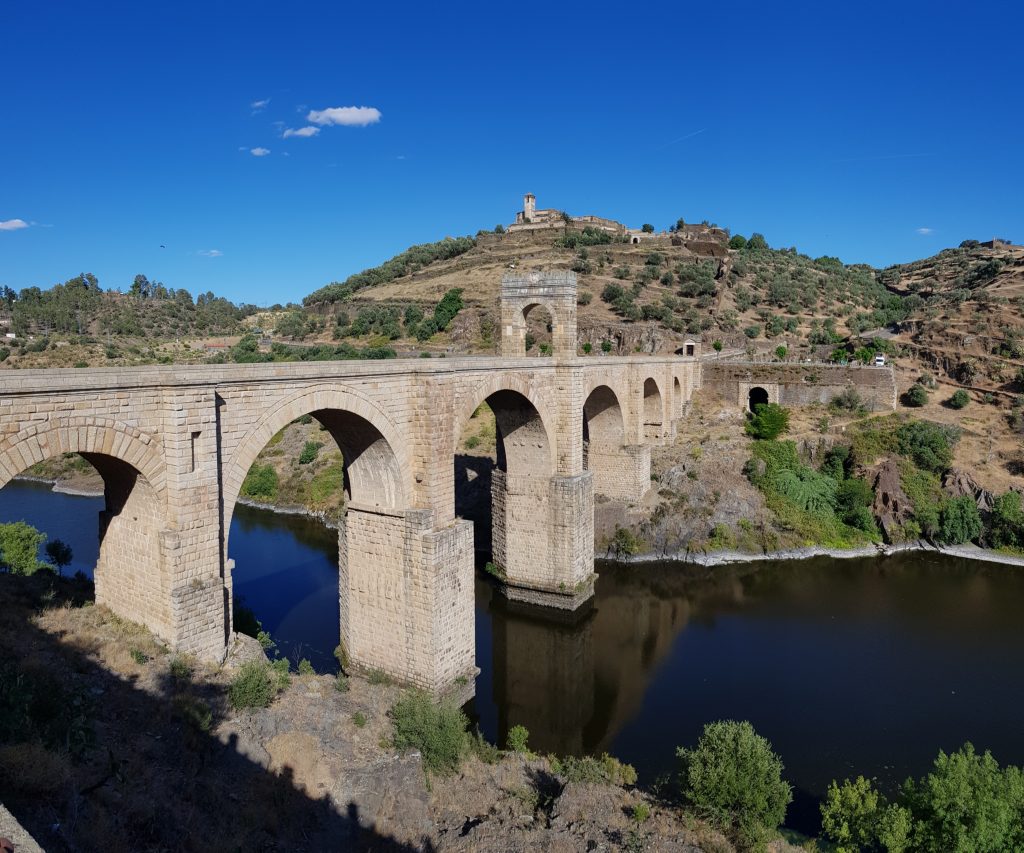
It consists of six symmetrical arches, 194 m long and 71 m high, built in honour of Roman Emperor Trajan in 103-106. The first arch on the left was destroyed by the Moors to stop an enemy army approaching the town – but the plan failed presumably because the enemy soldiers could swim! The bridge was subsequently repaired using stones from the original quarry. The second arch from the right was also destroyed and rebuilt – twice. This time it was the Spanish doing the destructive business. First to keep out the Portuguese and secondly the French. Probably with the same result!
Anyway, Portugal was only about 20 kms further down the road. So, just for the hell of it, we drove there. Over the border – and immediately turned round and headed home, which by this time was about 80 kms distant!
Glenda received cookery lessons from our Dutch camping neighbours. Harm and Klasiena are Dutch but live in Southern Spain. Harm’s hobby is cooking. Well, I’m expecting a risotto soon as well as a lemon spaghetti dish!
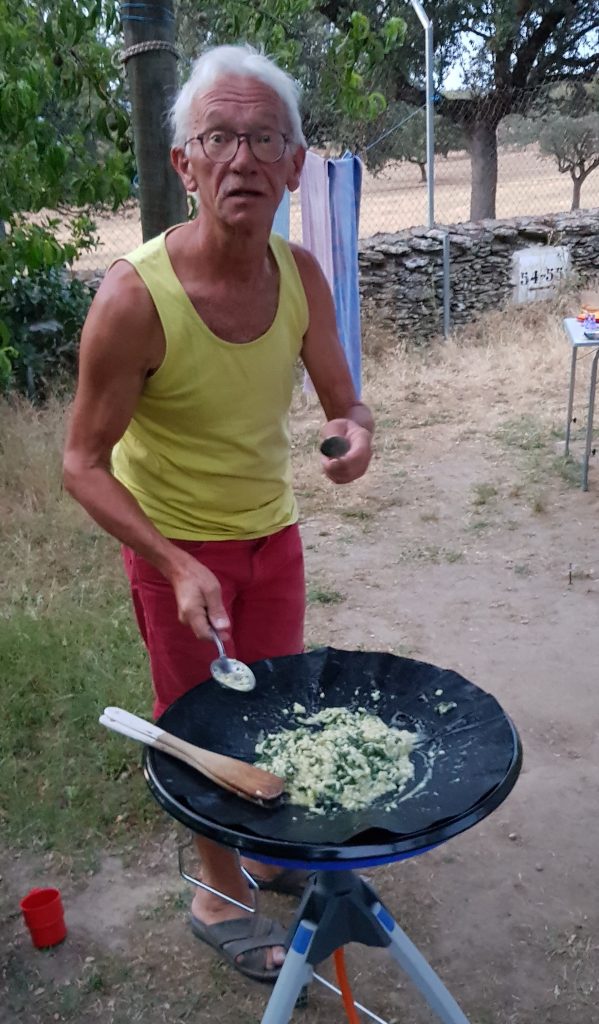
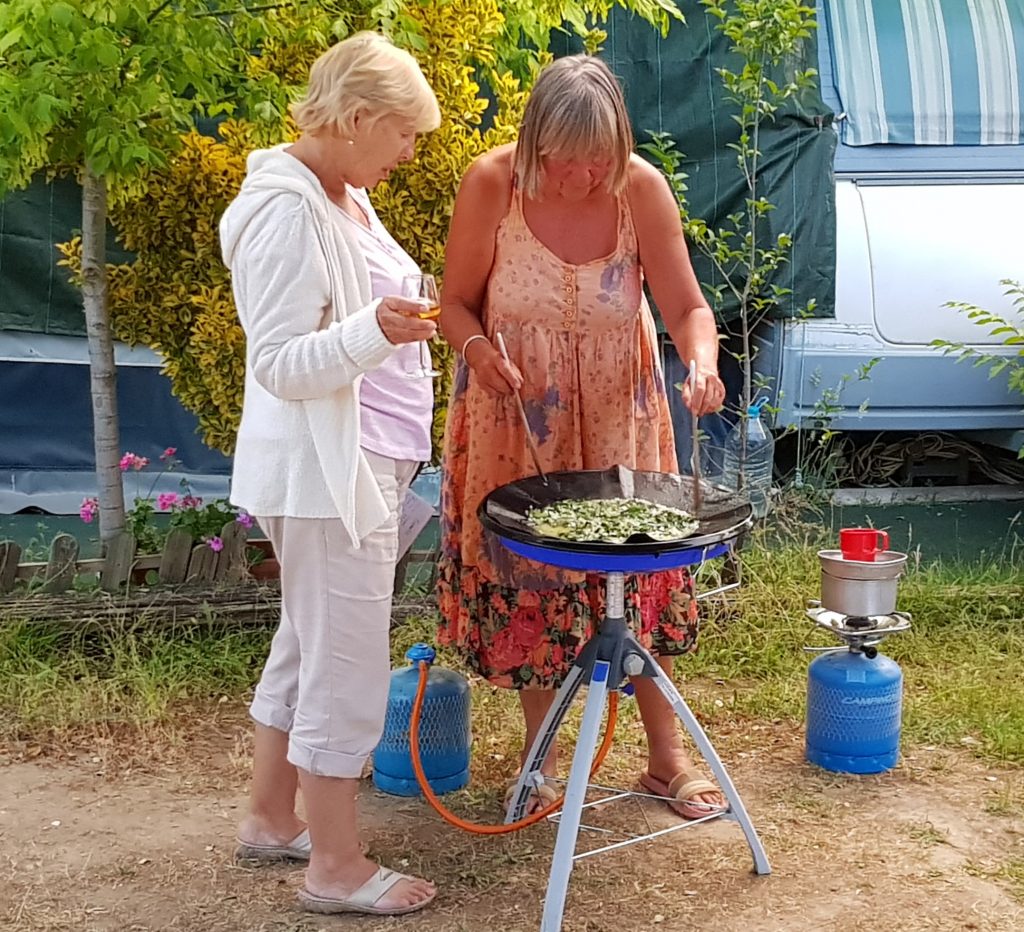
We had to visit Glenda’s favourite hotel, the Hospideria Monfragüe a couple more times before we left Plasencia. Just to be sure that their food was the best in the area. And I think it was confirmed.
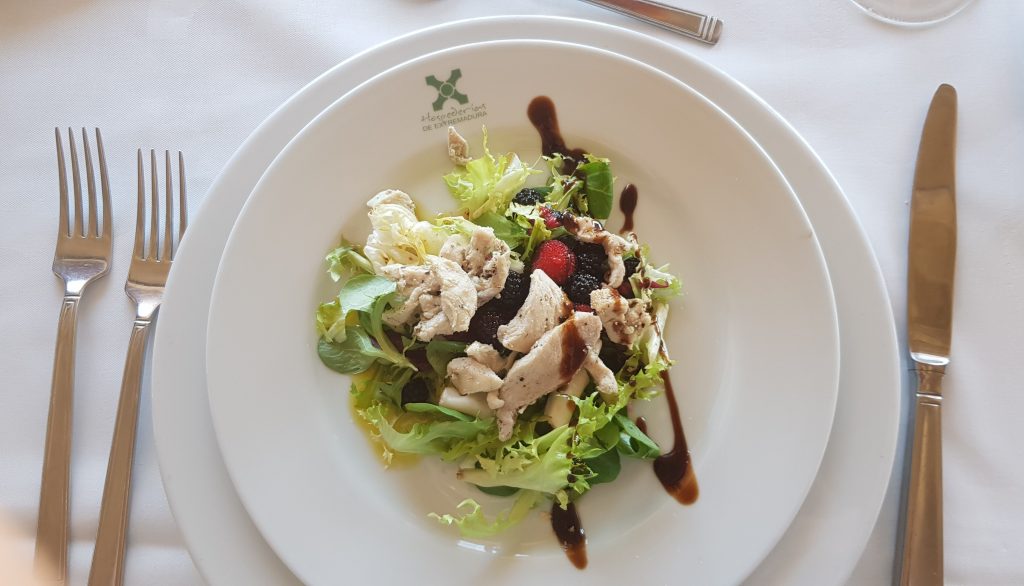
Yes, confirmed! And coffee on their elevated deck after …
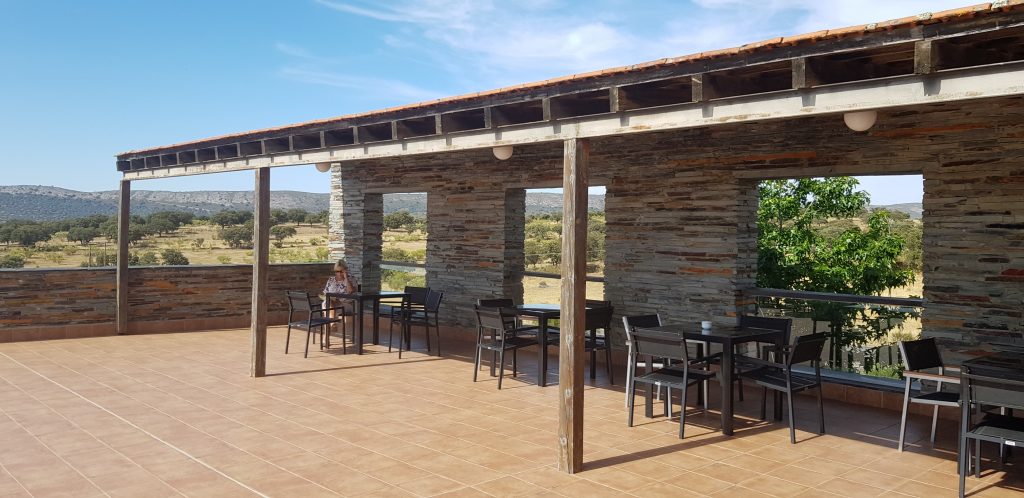
With a fabulous view …
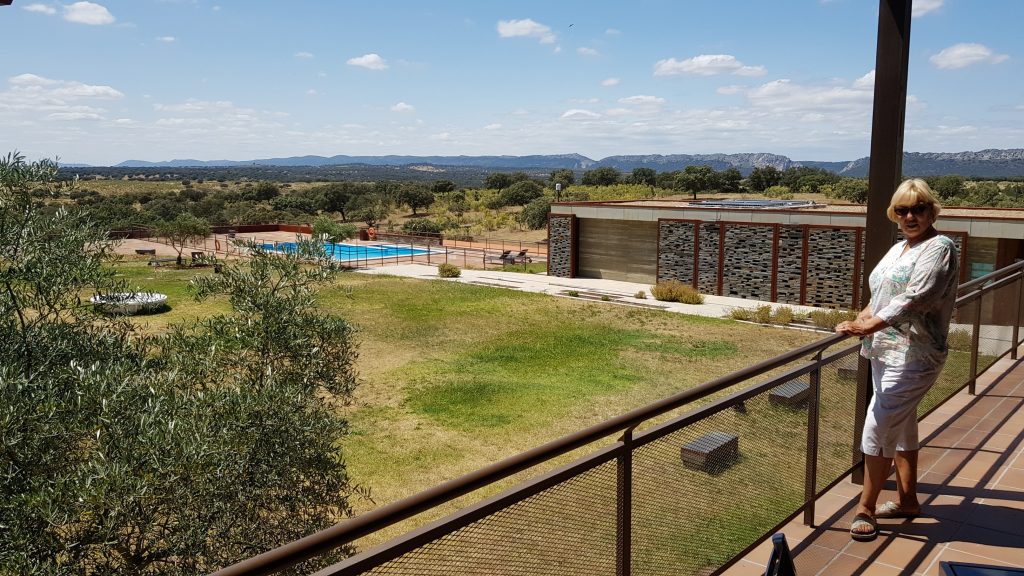
The only problem was that when we emerged we found our car surrounded by the police!
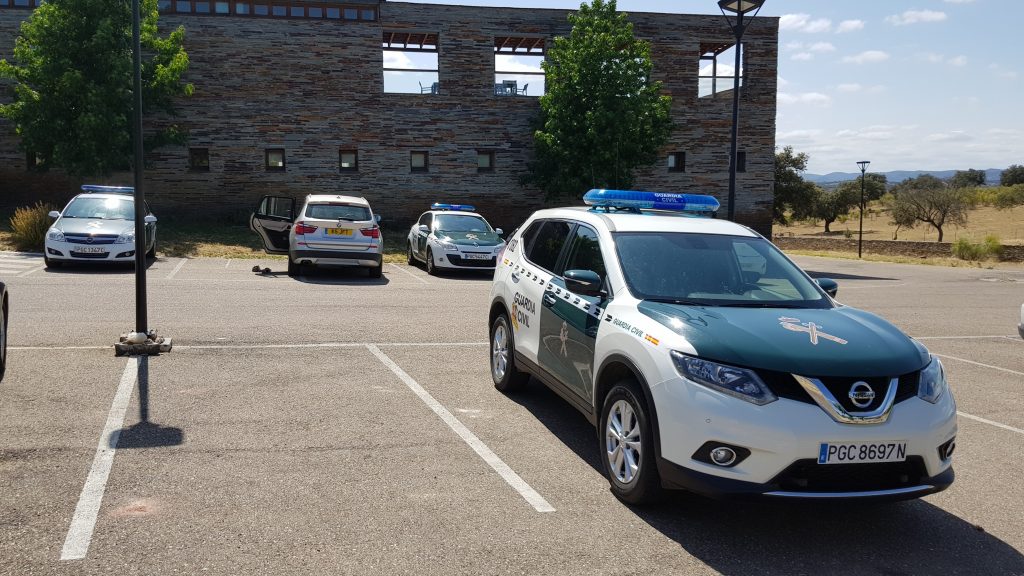
Glenda wants to visit Guadalupe which would be a long day’s trip. We’ve had such a good and varied time here but it’s time to move on – so Guadalupe here we come!
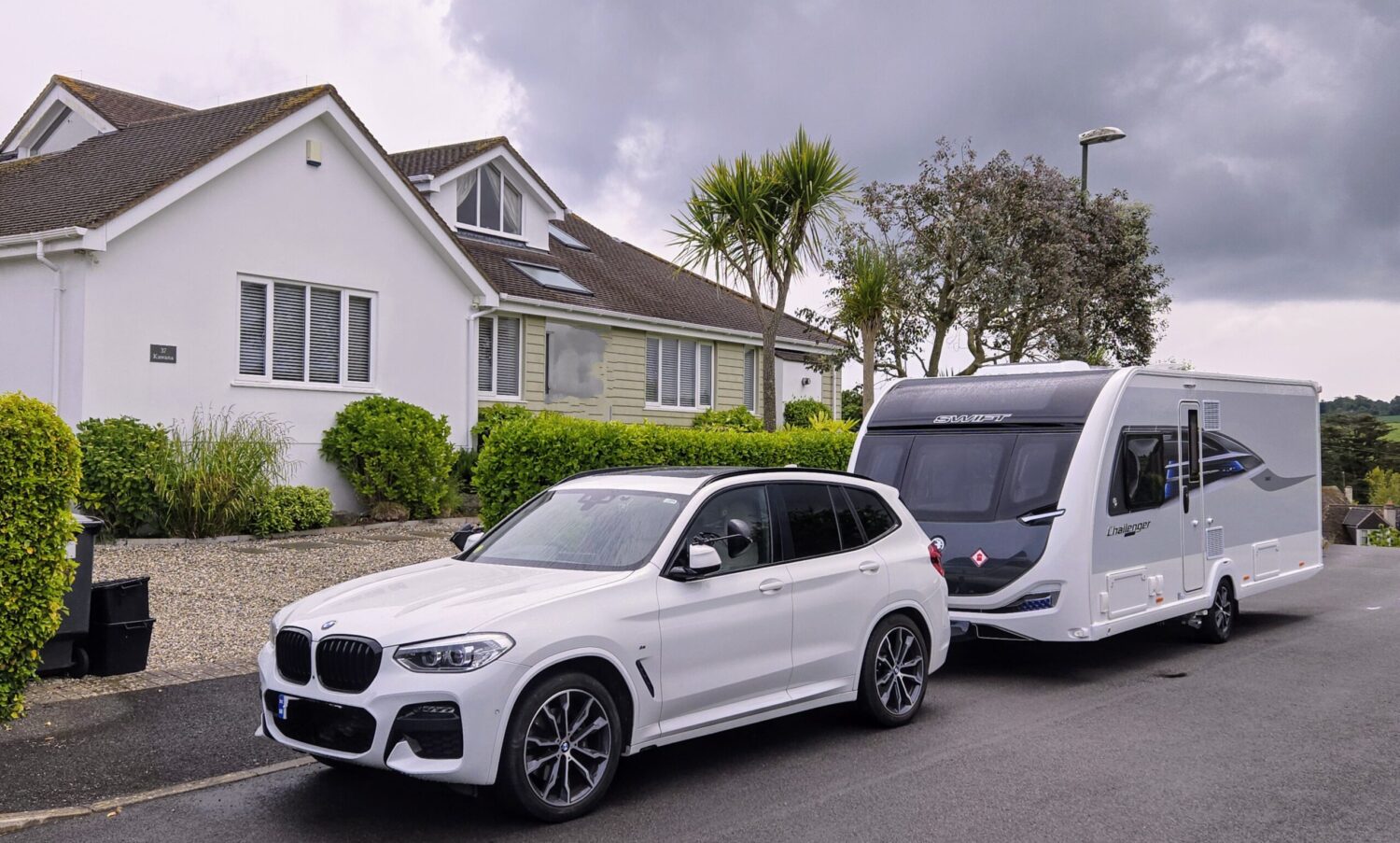
Looks like you are upto date with your posts from Spain. We heard it was going to be 44°C in Spain this week, but you wouldn’t be walking the Camino track again if that was the case.
Loving the photos.